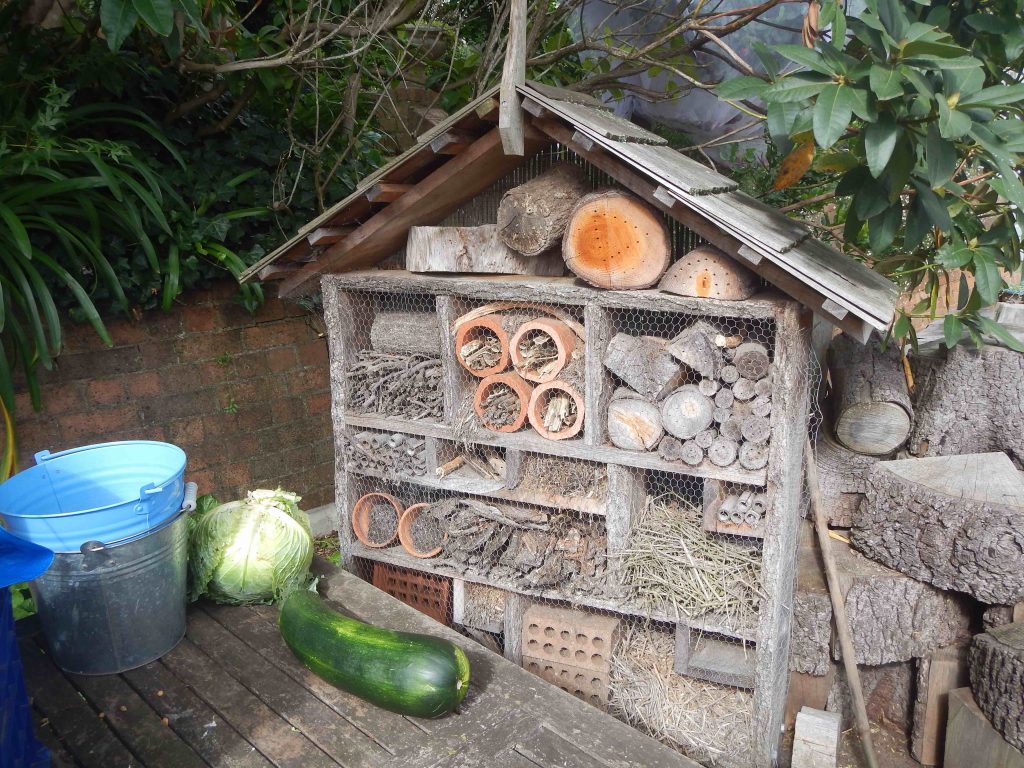
An insect hotel provides shelter for a variety of beneficial insects in your garden, especially native solitary bees and wasps, which pollinate your plants and help keep pests under control. Other beneficial insects include lacewings, hoverflies, ladybugs, beetles, and earwigs.
Insects are vital members of our ecosystems, but humans have destroyed and poisoned so many of their natural habitats. Now is your chance to help change that, and learn more about these fascinating creatures.
There are lots of ways to make your own hotel, but they should have the following basic features: a selection of smooth, cylindrical spaces, 3–10 mm in diameter and at least 10 cm deep, made in natural materials like a clump of bamboo sticks, holes drilled into untreated wood, and holes poked into a block of smooth, dry clay. The holes must only be open at one end. These are for the mainly solitary bees and wasps to lay and hatch their young, and for hibernating in over winter. Leafcutter bees like holes in logs and walls, while blue-banded bees and teddy bear bees burrow into mud and clay, and even old mortar between house bricks.
Add some stems of plants with a lot of soft, spongy pith inside them, like blackberries, hydrangeas, grapevines, or fennel stems. Make sure there is at least 10cm between stem joints. Tie them together or stick them into a larger tube of bamboo, cardboard or ceramic pipe. Carpenter bees like to drill their homes in pithy stems and soft timber.
All materials should be non-toxic, including glues and paints. Make sure the hotel has a waterproof roof that hangs over the entrance to keep out rain, and put your hotel in a sheltered spot out of strong Sydney summer sun.
You could assemble the hotel in a wooden box, old shelves or even an old TV or computer shell! If you have a large space to fill, you can include seed pods, coir matting, wool, bricks, terracotta pots, and more. You can make a very simple hotel by tying together a bunch of bamboo sticks, and hanging them in a tree.
